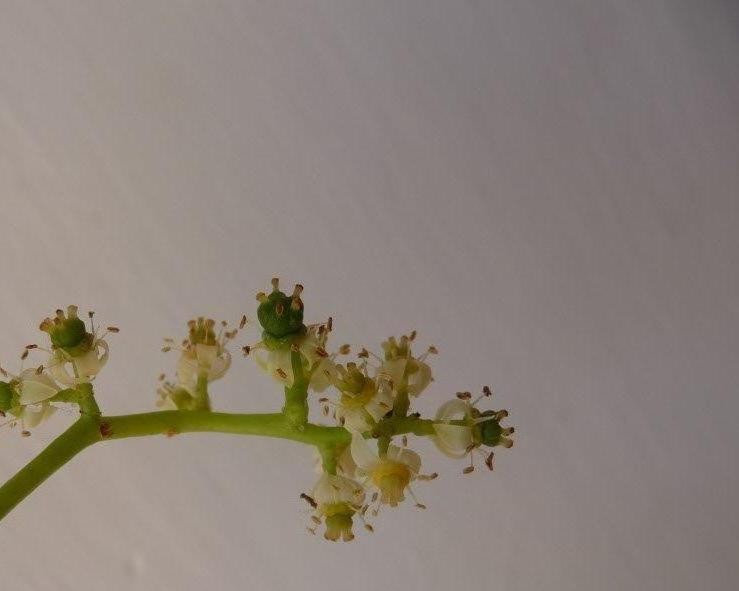Ambarella
(Spondias dulcis)

Description
Spondias dulcis (syn. Spondias cytherea), known commonly as ambarella in Sri Lanka or June plum, is an equatorial or tropical tree, with edible fruit containing a fibrous pit. In the English speaking Caribbean it is typically known as golden apple and elsewhere in the Caribbean as pommecythere or cythere. In Polynesia it is known as wi. This fast-growing tree can reach up to 20 m (66 ft) in its native range of Melanesia and Polynesia; however, it usually averages 10–12 m (30–40 ft) in other areas. Spondias dulcis has deciduous, pinnate leaves, 20–60 cm (8–24 in) in length, composed of 9 to 25 glossy, elliptic or obovate-oblong leaflets 9–10 cm (3.5–3.9 in) long, which are finely toothed toward the apex. The tree produces small, inconspicuous white flowers in terminal panicles. Its oval fruits, 6–9 cm (2.4–3.5 in) long, are borne in bunches of 12 or more on a long stalk. Over several weeks, the fruit fall to the ground while still green and hard, then turn golden-yellow as they ripen. According to Morton (1987), "some fruits in the South Sea Islands weigh over 500 g (1 lb) each." Spondias dulcis has been introduced into tropical areas across the world. It was brought to Jamaica in 1782, and it is cultivated in Panama, Cuba, Haiti, the Dominican Republic, Puerto Rico, Suriname, Grenada, Trinidad and Tobago, St. Lucia, and eastern Sucre in Venezuela. The United States Department of Agriculture received seeds from Liberia in 1909, but it did not become a popular crop in the US. Nevertheless, it is grown in South Florida as far north as Palm Beach County. The fruit is also widely grown in Somalia's agriculture belt, probably introduced during the colonial times preceding 1960. Spondias dulcis is most commonly used as a food source. In West Java, its young leaves are used as seasoning for pepes. In Costa Rica, the more mature leaves are also eaten as a salad green though they are tart. However, it is most commonly used for its fruit. The fruit may be eaten raw; the flesh is crunchy and a little sour. According to Boning (2006): "The fruit is best when fully colored, but still somewhat crunchy. At this stage, it has a pineapple-mango flavor. The flesh is golden in color, very juicy, vaguely sweet, but with a hint of tart acidity."
Taxonomic tree:







